10 young iF DESIGN TALENT AWARD 2022 winners solve United Nations SDGs
iF DESIGN TALENT AWARD 2022 WINNERS
With the Félix Candela-designed Oceanografica in Valencia – the World Design Capital 2022 – as the backdrop, iF DESIGN TALENT AWARD reveals its 85 project-strong winners list for 2022. Notable concepts range from a floating barrier that catches plastic in rivers to a haptic device that maximizes skin-to-skin bonding between premature babies and their parents, and an agricultural equipment that attracts locusts and converts them into fertilizer. Each one presents a visionary idea to solve the problems of the United Nations’ Sustainable Development Goals (SDGs).
It has been in the DNA of the iF DESIGN AWARD to not only recognize and promote the very best within design but also nurture young creatives and their ideas since 2002. For 20 years, the competition supports and encourages up-and-coming talent with highly acclaimed, international awards as well as prize money funds. More than 1,700 student concepts have received the accolade to date.
A jury panel of global, high-ranking experts selected a further 85 young designers to add to the number. The approximately 6,400 submissions were evaluated by the United Nations SDGs using questions like as does it solve a problem, does it reflect or promote high moral-ethic standards, does it make economic sense, and more. Winners ranged from Austria, Belgium, Canada, China, Germany, Great Britain, India, Japan, Norway, Poland, Republic of Korea, Sweden, Taiwan, and the USA, each cashing in a share of the 50,000 euro total prize money.
Find 10 notable iF DESIGN TALENT AWARD 2022 below and the full list – here.

Trashboom by Moritz Schulz
TrashBoom
SDG: Life below Water
Design: Moritz Schulz
University: University of Wuppertal, Germany
Prize Money: 8,000 euro
Acting as a floating barrier, TrashBoom catches plastic waste in rivers to prevent it from entering he oceans. The structure of the design can be realized in locally-sourced materials, enabling rapid manufacturing and boosting local economies whilst saving on shipping emissions. Open-source blueprints allow for scalability and maximizing accessibility, re-building and easy maintenance, and the transfer of knowledge as local jobs raise awareness in the society.
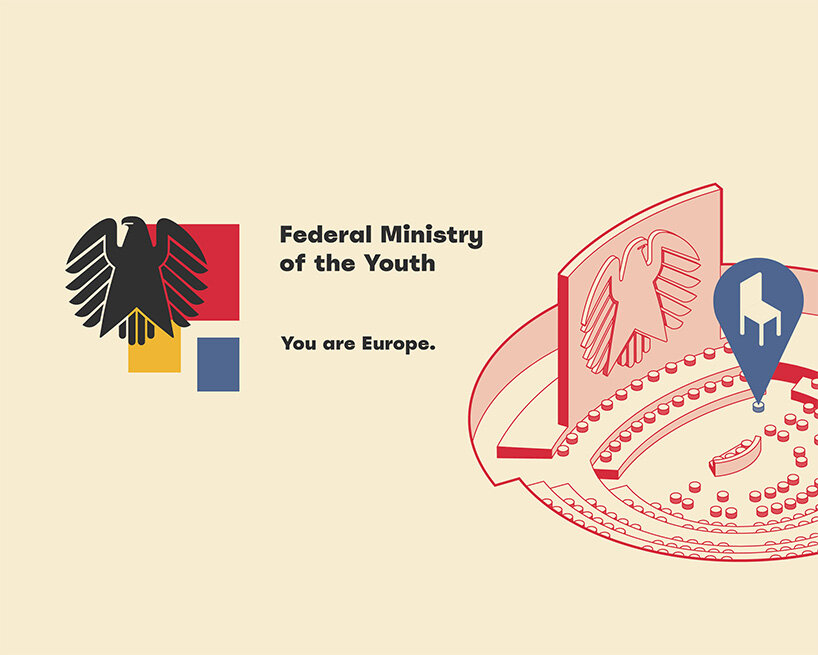
Federal Ministry of the Youth by Jasmin Galle, Theresa Betz and Maja Lewandowski
Federal Ministry of the Youth
SDG: Reduced Inequalities
Design: Jasmin Galle, Theresa Betz, Maja Lewandowski
University: University of Design Schwaebisch Gmuend, Germany
Prize Money: 8,000 euro
A federal ministry for young people was conceptualized to represent this demographic in politics and society. With the narrative set in 2025, the ministry has successfully existed for four years to demonstrate how it could act in the future through leitmotifs, communication strategies and design. The project focuses on the idea of Europe as many young people have an immigrant background already.
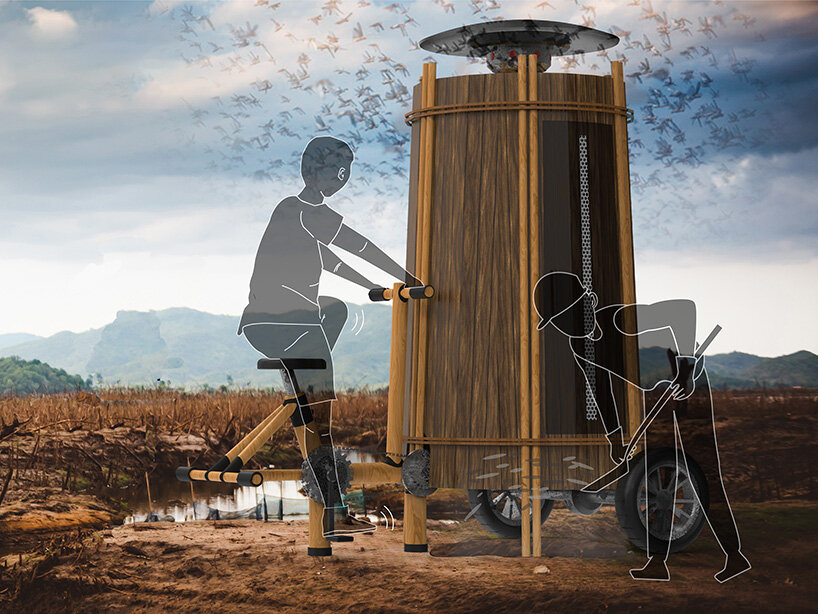
Farmland Guardian by Chien-Chen Lai
Farmland Guardian
SDG: Responsible Consumption + Production
Design: Chien-Chen Lai
University: National Taiwan University of Science and Technology, Taipei City, Taiwan
Prize Money: 8,000 euro
Farmland Guardian is a piece of agricultural equipment that attracts locusts and converts them into fertilizer through bionic nepenthes. Infrared radiation and 4-vinylanisole is used to attract the bugs. Powered mechanically, the machine’s main material is sturdy bamboo which makes it recyclable. The product aims to help reduce economic and agricultural losses caused by locust plagues in the Middle East and Africa.

Terracotta Valley Wind by Chenkai Guo, Baohua Sheng, Yilei Lyu and Yu Zhang
Terracotta Valley Wind
SDG: Sustainable Cities + Communities
Design: Chenkai Guo, Baohua Sheng, Yilei Lyu, Yu Zhang
University: Tama Art University, Tokyo, Japan
Prize Money: 8,000 euro
Using the inexpensive and accessible clay, this evaporative cooling system uses terracotta to cool subway stations during summer, thus reducing energy consumption. The material is porous to allow water to quickly evaporate. The system also utilizes the unused wind resource in the stations to maximize the value of train-induced wind.

Sensory Healing Behavioral Health Clinic by Chih-Yun Tseng, Chen-Hsuan Lee and Han-Yu Lai
Sensory Healing Behavioral Health Clinic
SDG: Goodhealth + Well-Being
Design: Chih-Yun Tseng, Chen-Hsuan Lee, Han-Yu Lai
University: National Taiwan University of Science and Technology, Taipei, Taiwan
Prize Money: 3,000 euro
The Sensory Healing Behavioral Health Clinic is divided into three areas each with their own independent treatment spaces: mood disorders, autism and substance abuse. Soft lines and curves shape the embracing, safe and comfortable interiors of the clinic. Natural elements encourage healing and lessen stress-related symptoms for patients. Uniquely, different environments within the spaces are created to aid the treatment of different conditions.
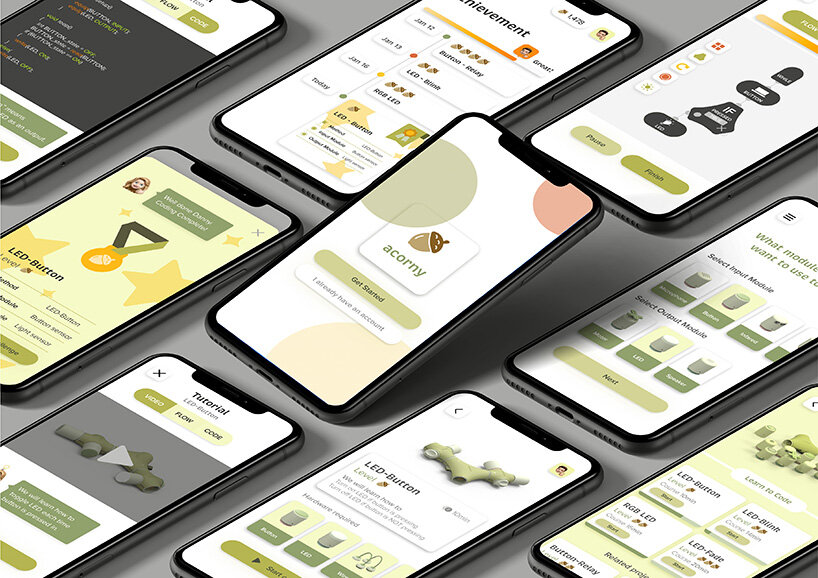
Acorny by Jaeyoung Myung and Soyoung Lee
Acorny
SDG: Quality Education
Design: Jaeyoung Myung, Soyoung Lee
University: Yonsei University, Seoul, Republic of Korea; University of Southern California, Los Angeles, USA
Prize Money: 3,000 euro
Acorny is an educational toy kit designed to teach the principles underlying computer algorithms. By using the motif of computer processing flow, children can intuitively understand computational concepts. The tool acts as a first step for young kinds into coding activities, introducing the potential benefits at an early age, and helping maximize a huge, new educational possibility.

Bo.by by Aleksandra Radlak
Body enables bonding between premature born and parents
SDG: Good Health + Well-Being
Design: Aleksandra Radlak
University: University of Art and Design Linz, Austria
Prize Money: 3,000 euro
Bo.by is an interactive, haptic device to bond skin-to-skin relationship between premature babies and their parents. With about 15 million born early each year globally, the solution enables two-way contact between parents and infants in the incubator. The baby’s mattress is connected to a parent device to send and receive data such as touch, breast movement, heartbeat, or body heat. This offers the possibility to experience natural, prolonged feel of one another.
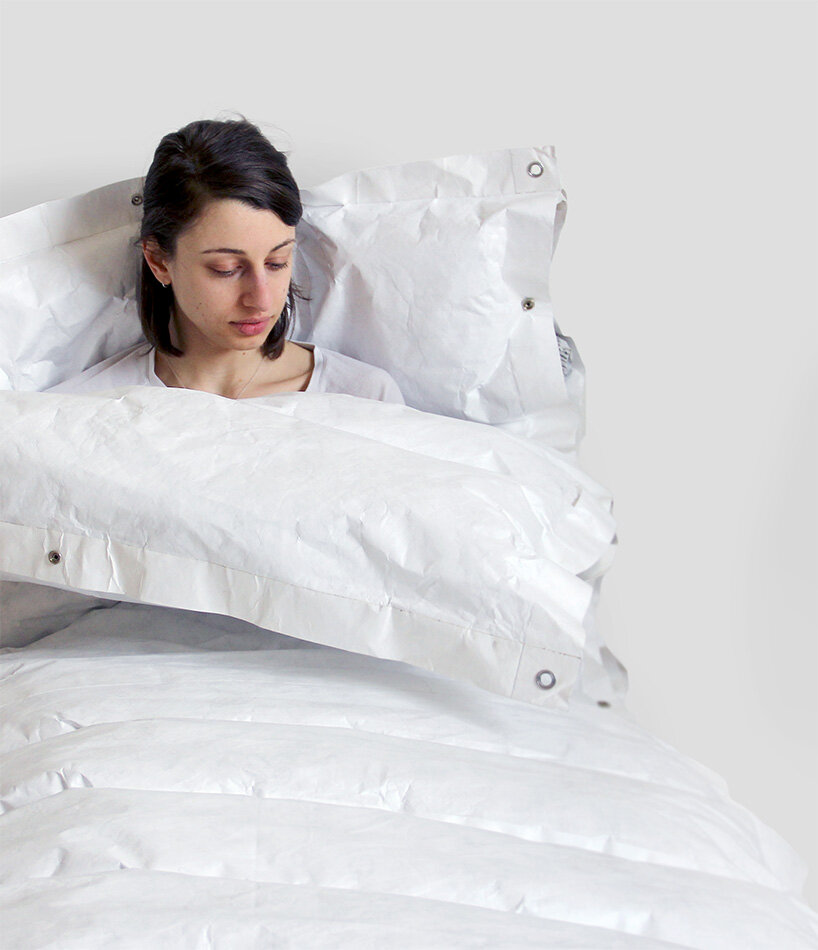
All Seasons Protective Aid by Jaxon Pope and Riccardo Centazzo
All Seasons Protective Aid
SDG: Good Health + Well-Being
Design: Jaxon Pope, Riccardo Centazzo
University: Lund University, Sweden
Prize Money: 3,000 euro
All Seasons Protective Aid offers a simple way of creating a barrier to protect homeless people and refugees from the natural elements. The system allows for various configurations to ensure a more safer and comfortable living and sleeping environment. It is made using locally available resources, lowering transportation costs and times, speeding up distribution, and increasing scalability. The design is capable of being packed down smaller than most insulating products.

Organic Purify Blocks by ChaoChun Kung
Organic Purify Blocks
SDG: Climate Action
Design: ChaoChun Kung
University: National Cheng Kung University; National Taiwan University of Science and Technology, Tainan, Taiwan
Prize Money: 3,000 euro
Organic Purify Blocks aims to accelerate the natural ecological operating system to purify water in crowded cities. Wetland plants that can filter water are placed in modular blacks. Like a conveyor, the dirty river water is brought of the top of the structure by wheels. Organic matter in the water is first filtered out to then form a waterfall of filtered river water. The system provides a habitat for birds and animals living on the riverbank, too.
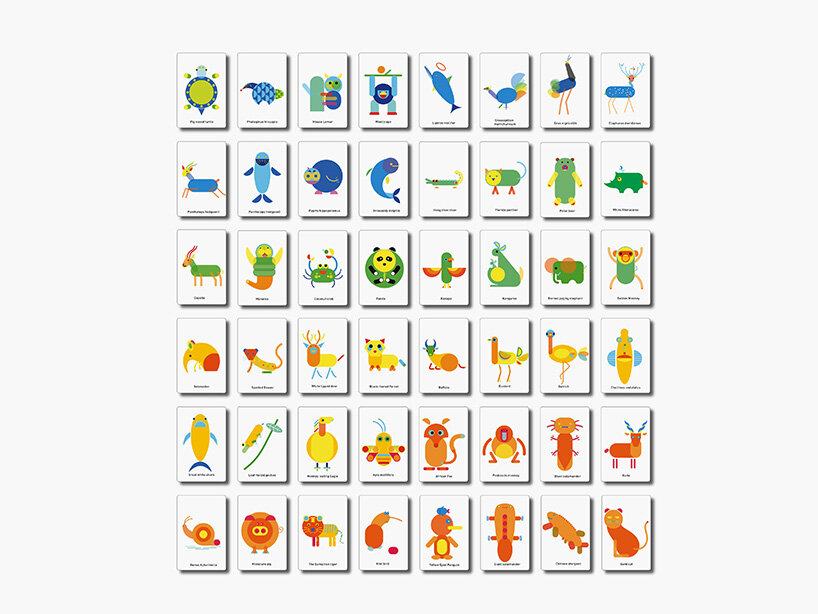
48Animals by Chunxu Zhou
48Animals
SDG: 15 Life on Land
Design: Chunxu Zhou
University: Guilin University of Technology, China
Prize Money: 3,000 euro
48Animals displays a set of symbols and products that feature rare and endangered animal species. The idea is to raise awareness of the urgent need to protect these species which are threaten. Computer and art processing were used to first create the animal images applied to billboards, stationery products, apps and more. All profits generated are donated to animal protection.
—
Following our inaugural collaboration in 2021, designboom and iF DESIGN TALENT AWARD partner in 2022 to announce 10 student projects that respond to the United Nations’ Sustainable Development Goals. 6,400 entries were evaluated down to 85 by the competition’s international jury panel. The prizes were awarded at a ceremony in the Oceanografica, Valencia during the World Design Capital 2022. Samsung Electronics, Grohe, Wonderland, Compal Electronics, Three Winged Bird, Casarte, and NetDragon are committed to young designers and act as sponsors of this award. to view all the student projects of iF DESIGN TALENT AWARD 2022 winners, visit here.

